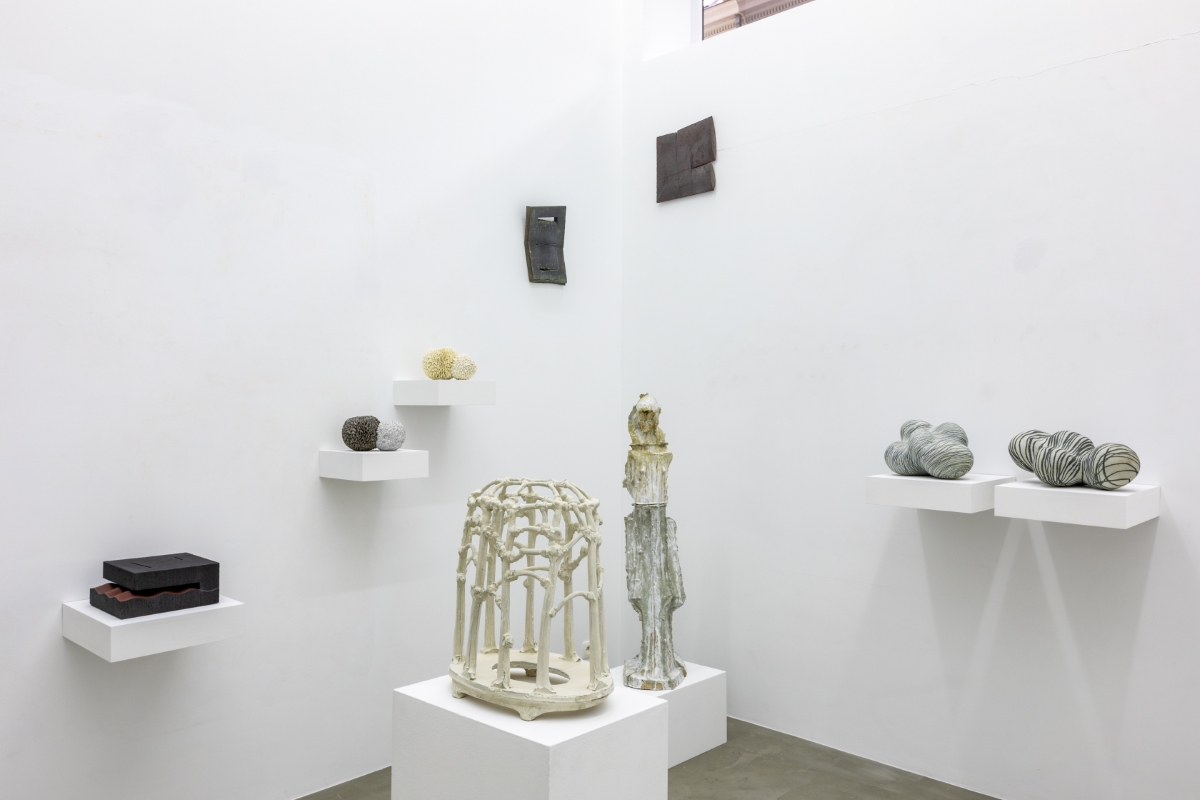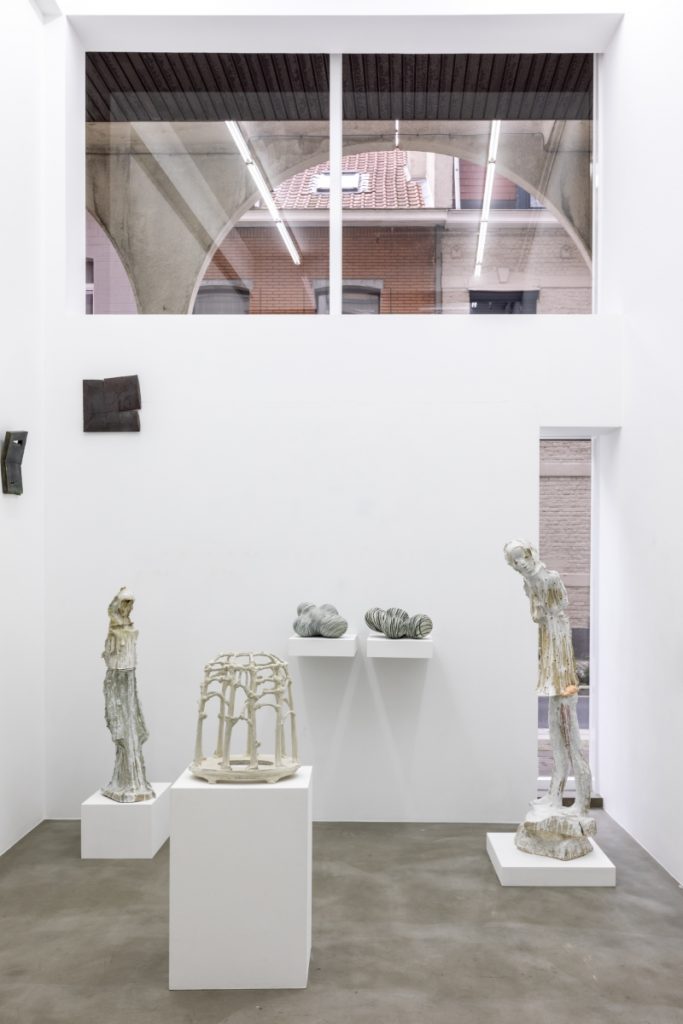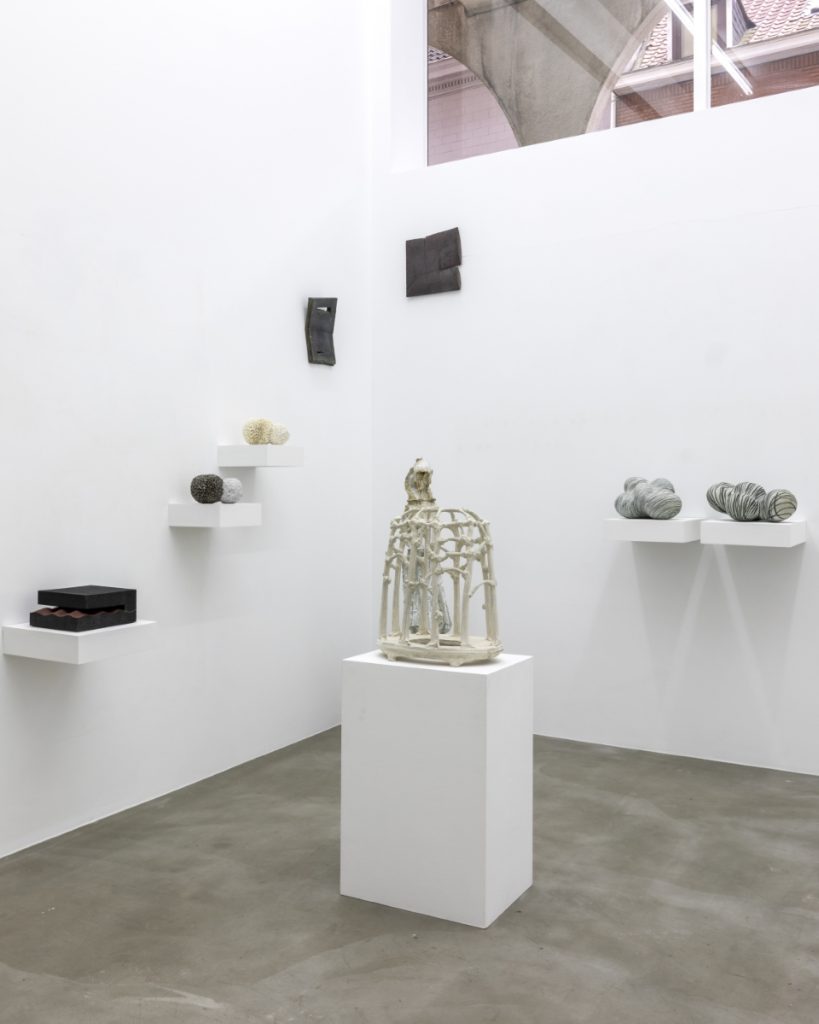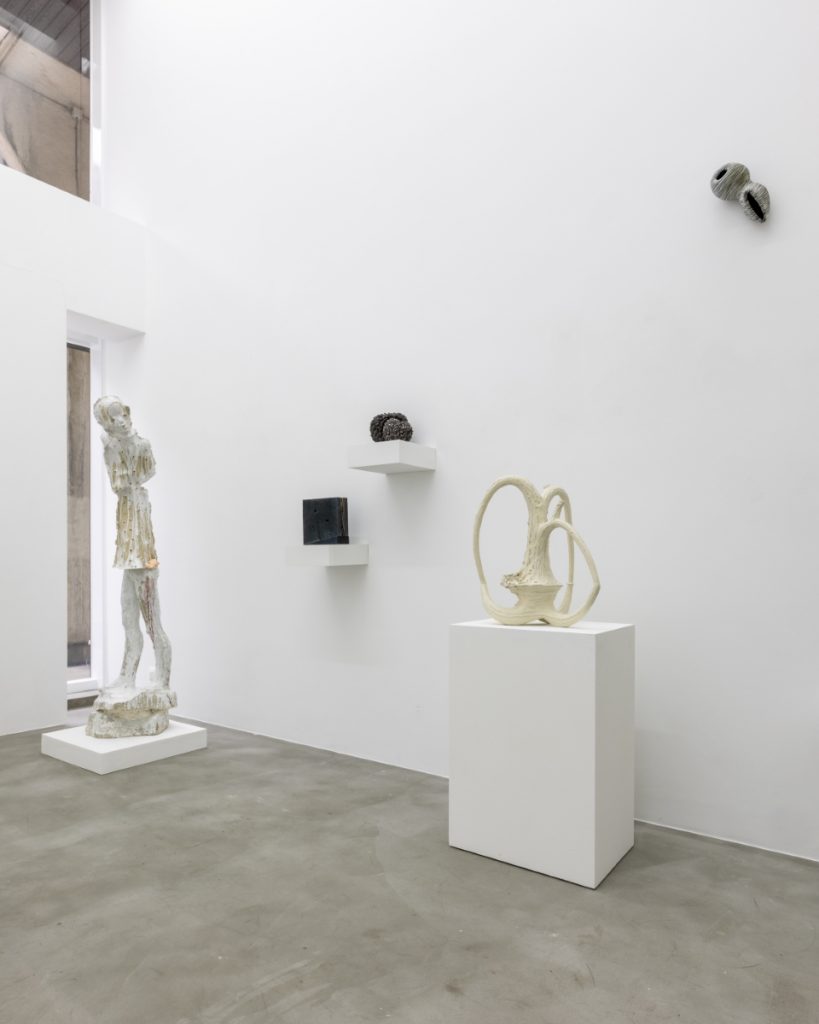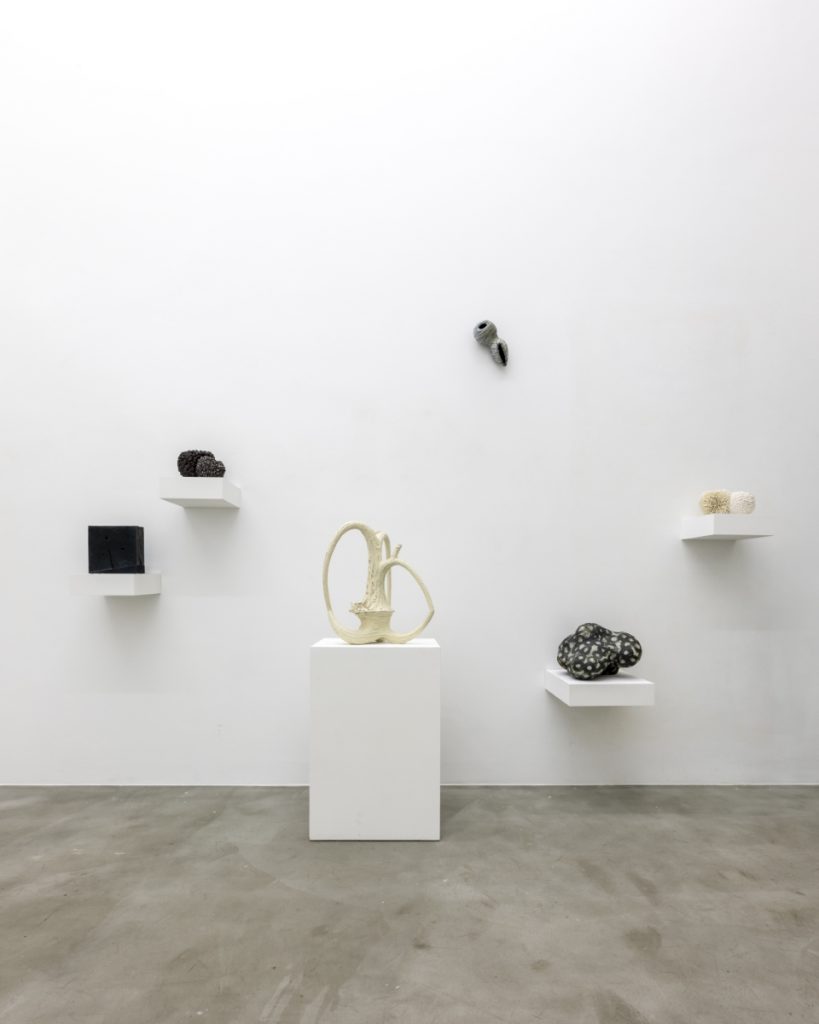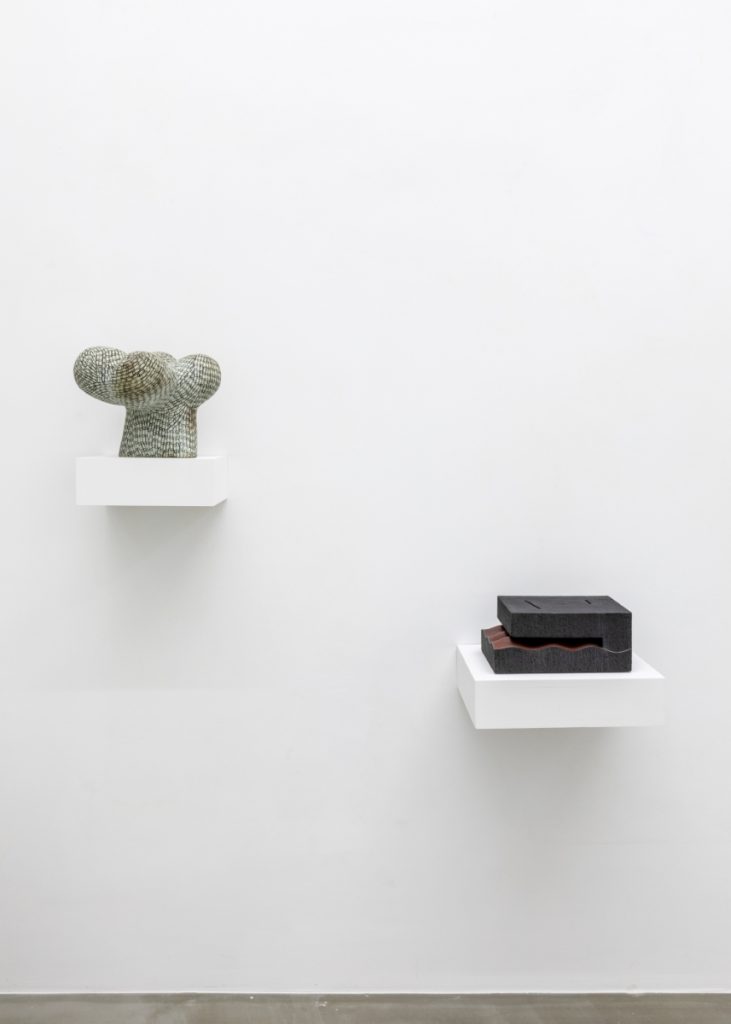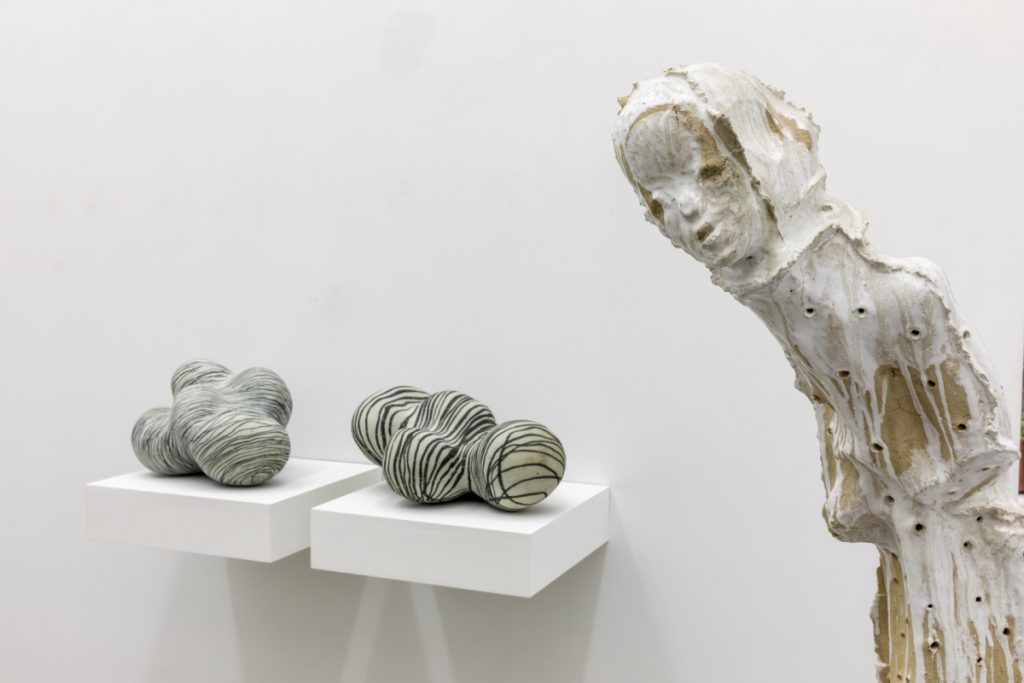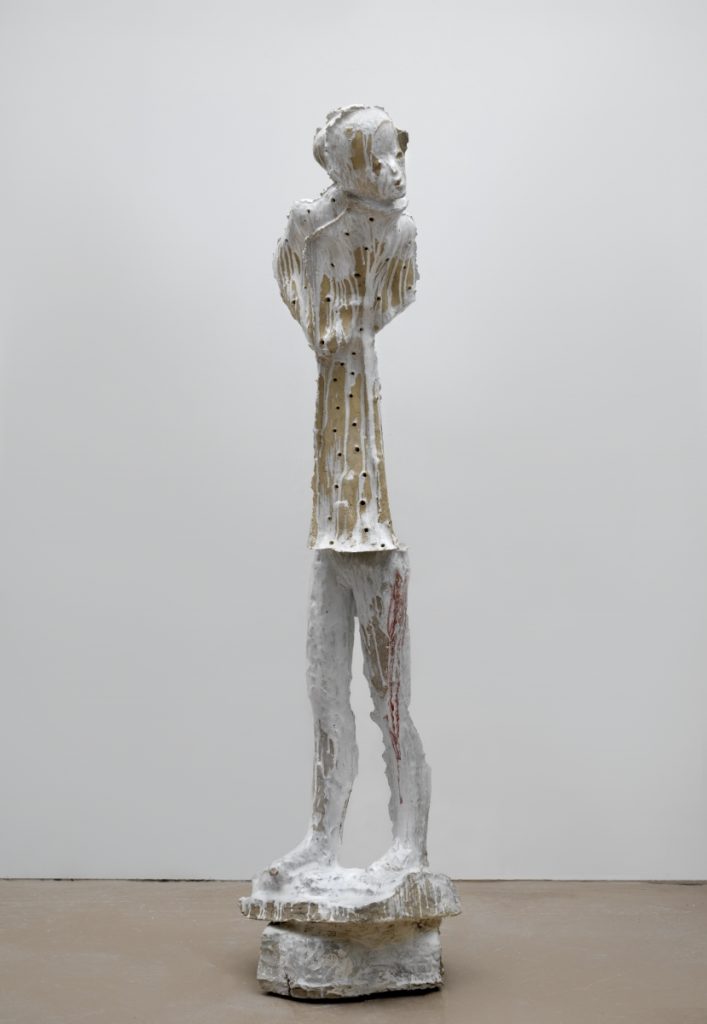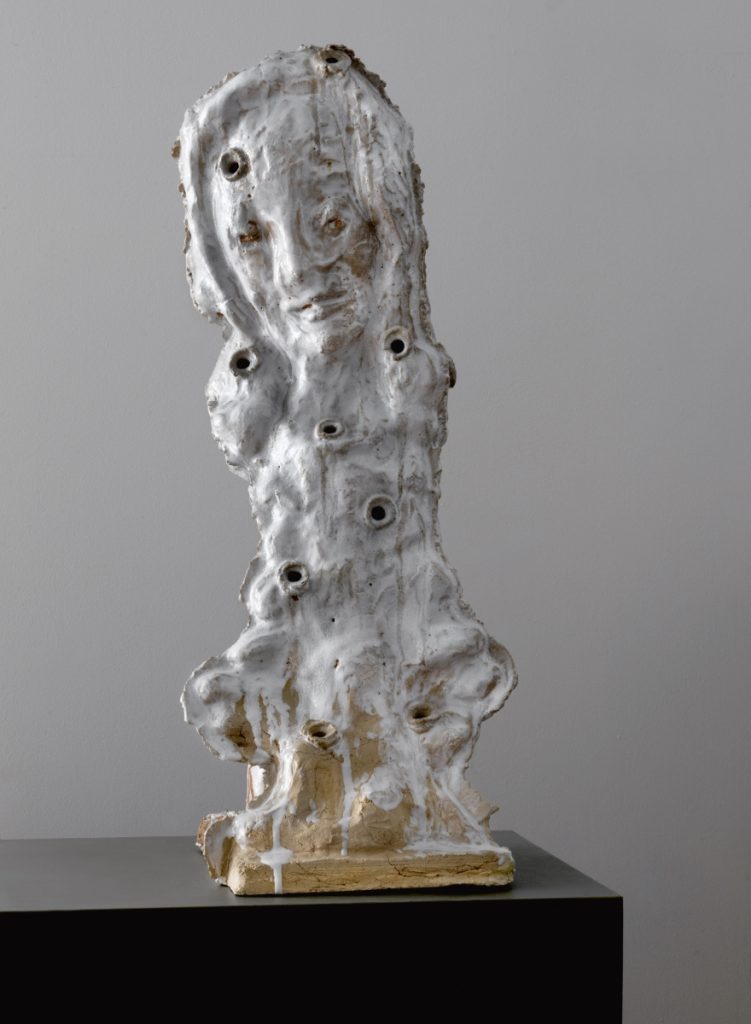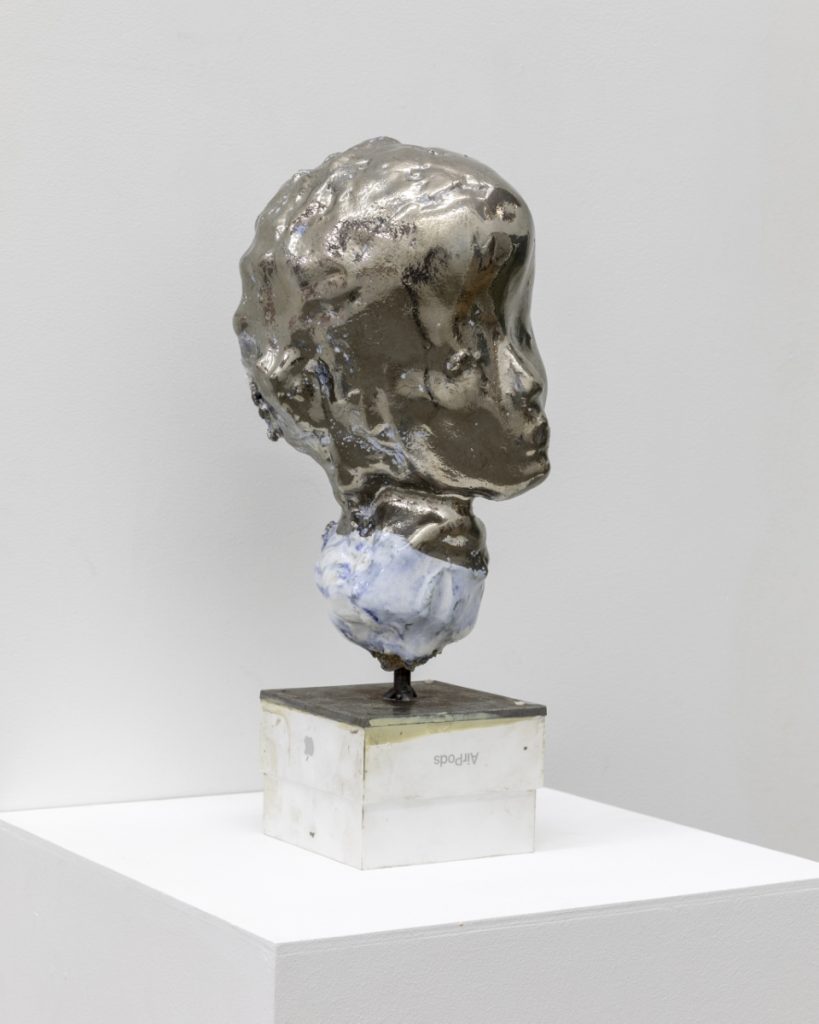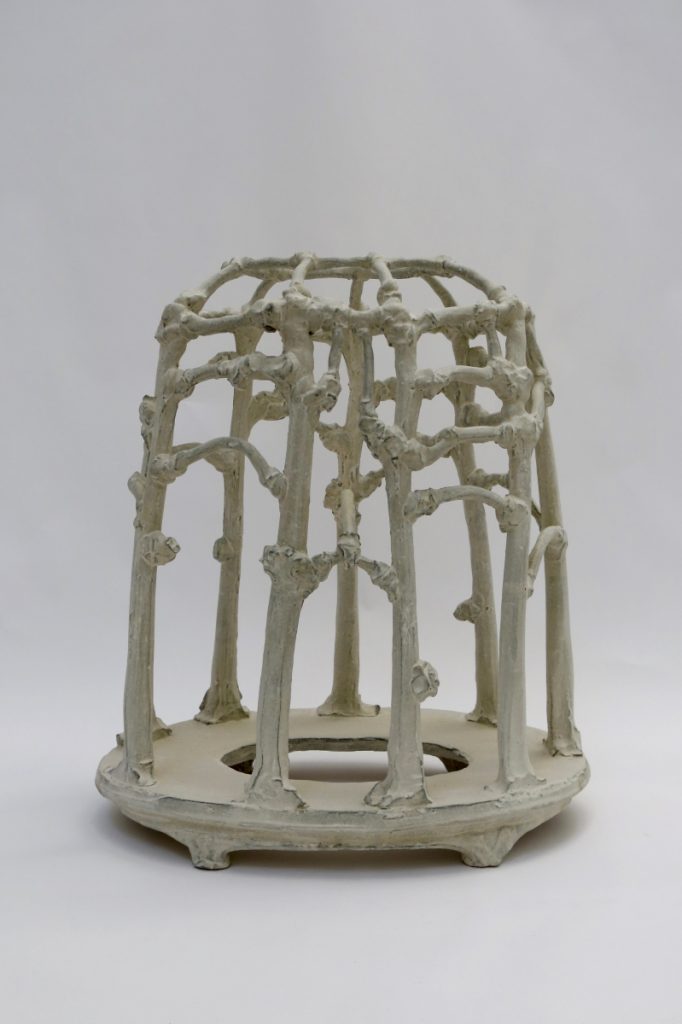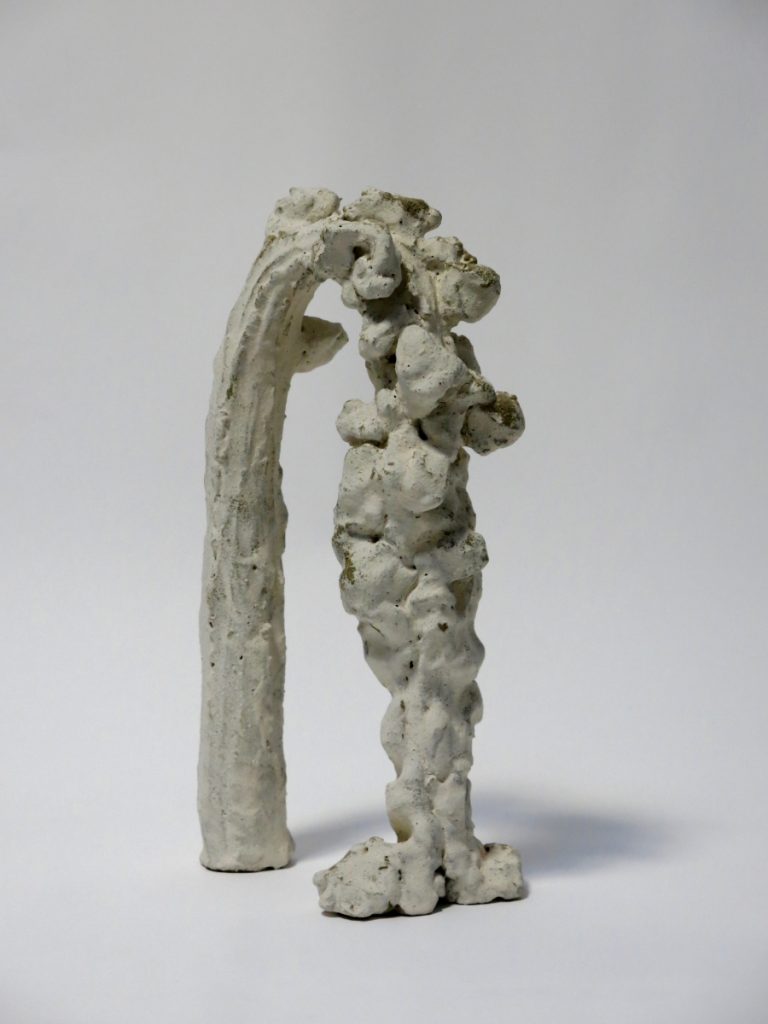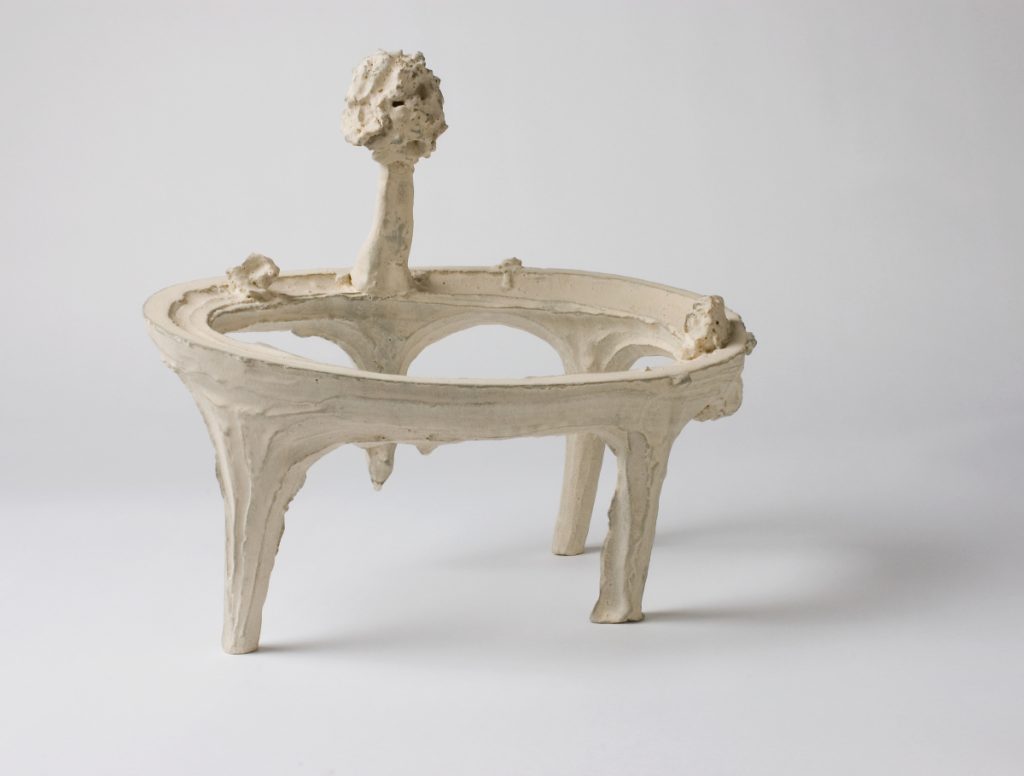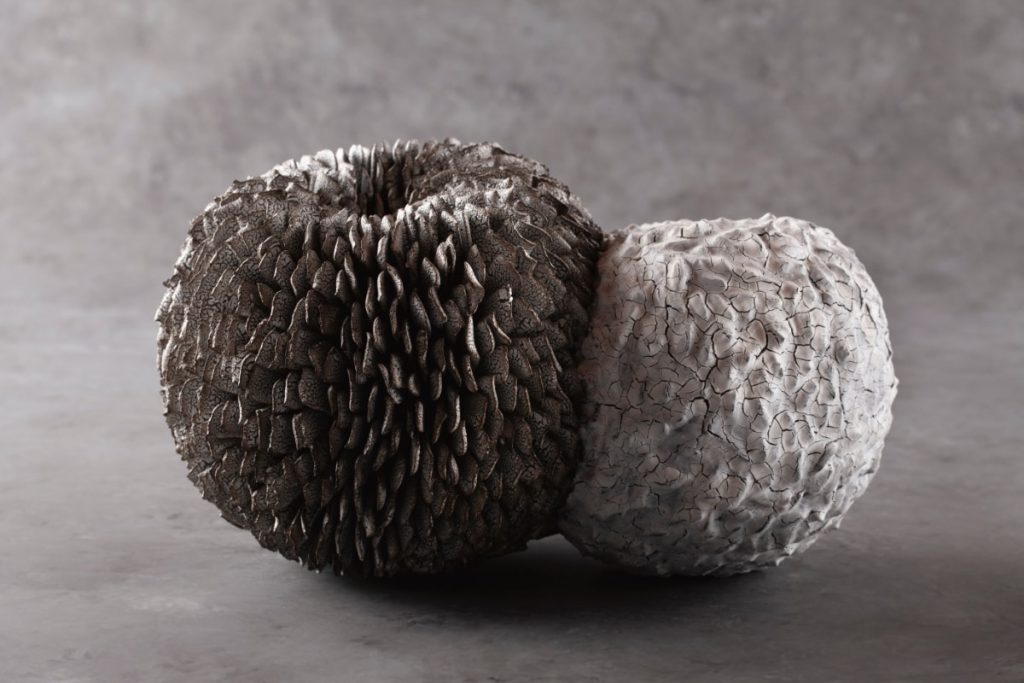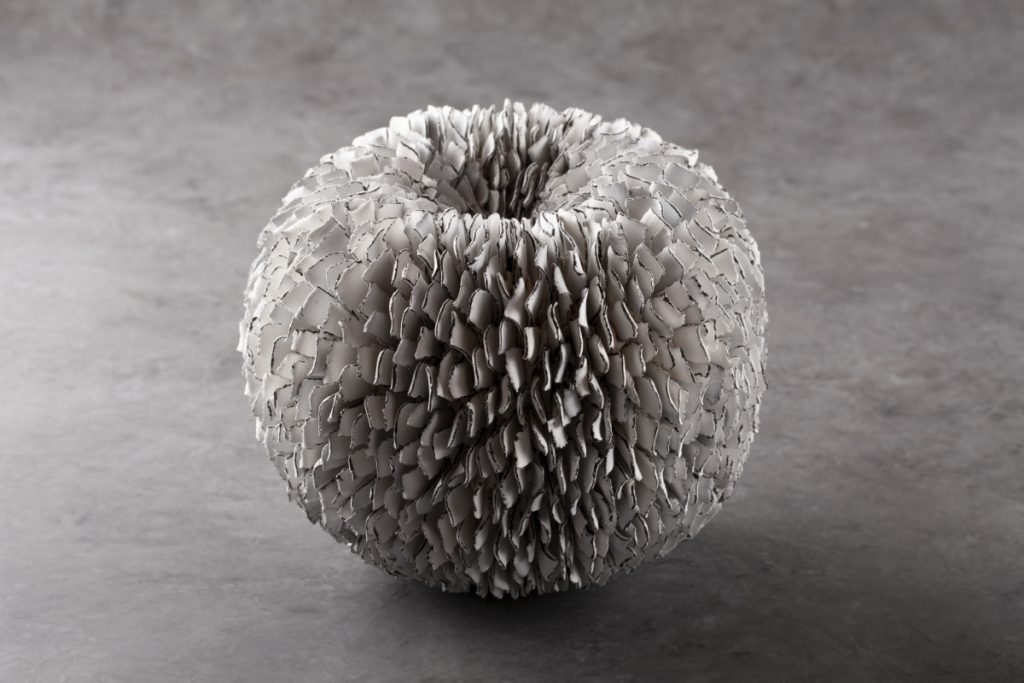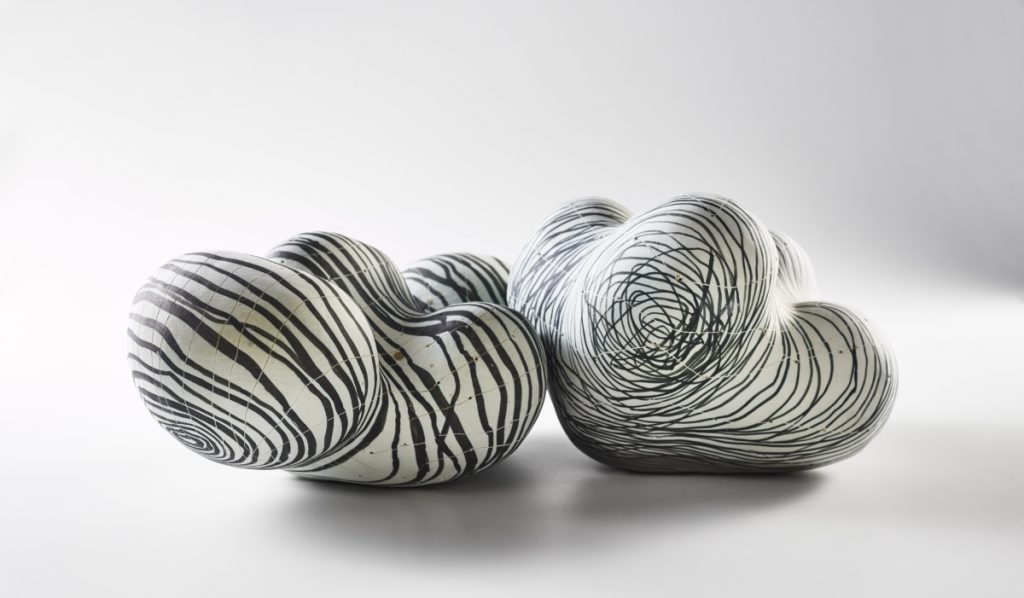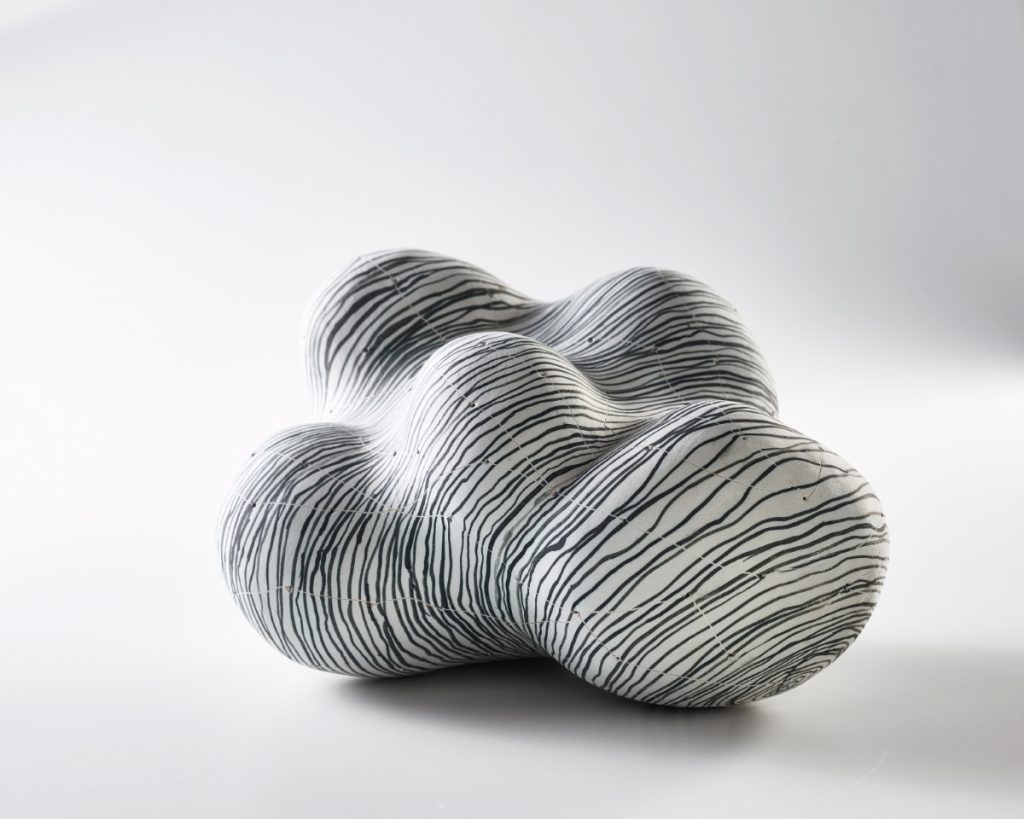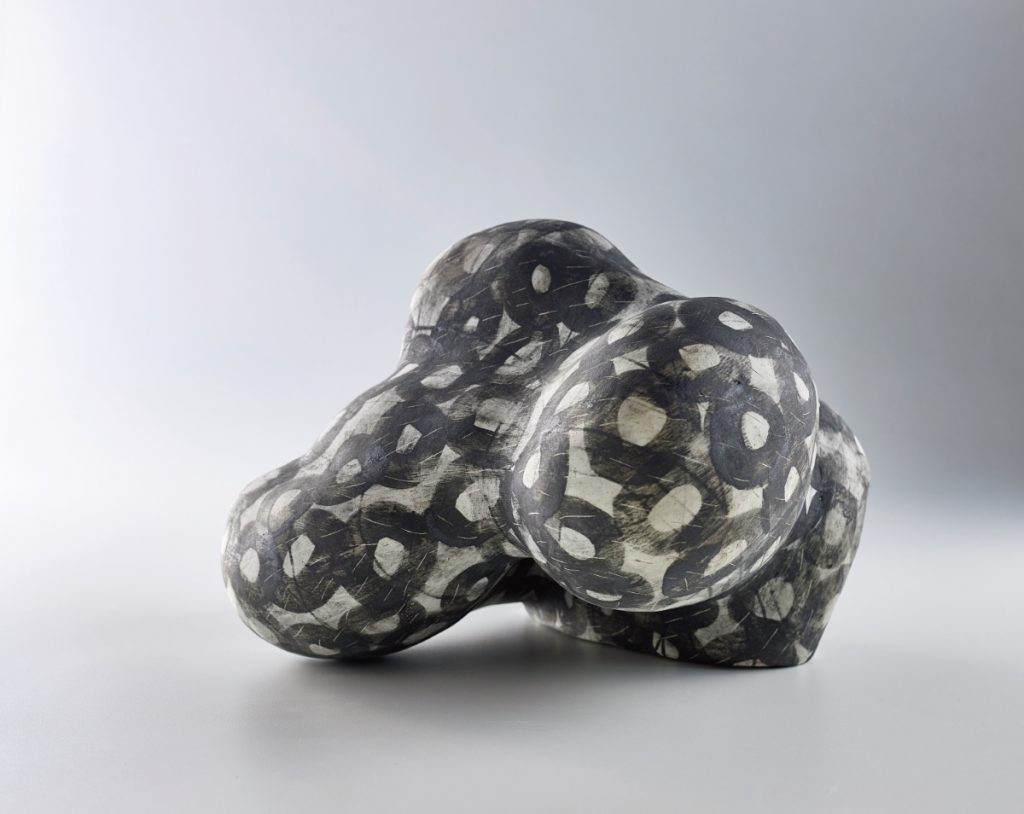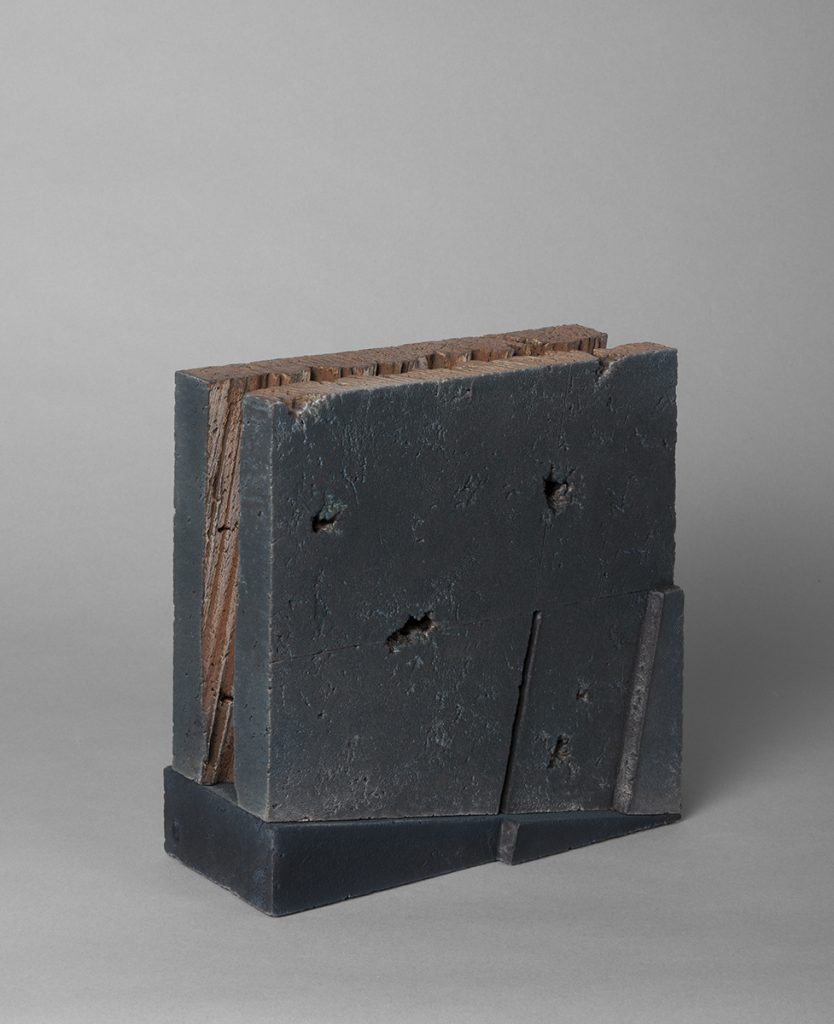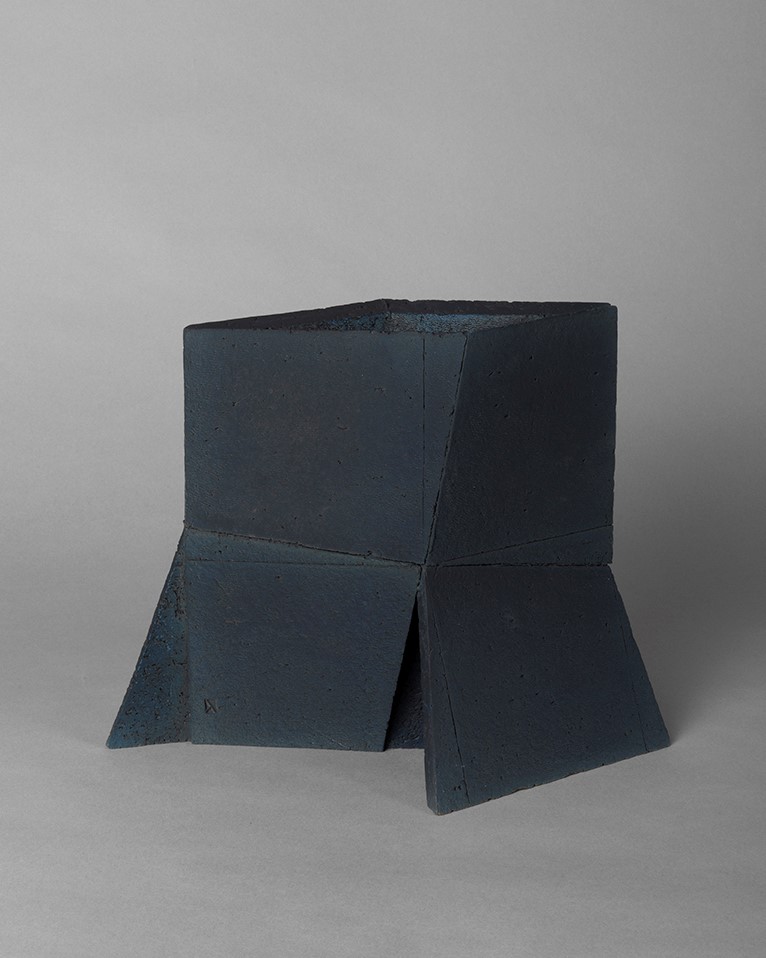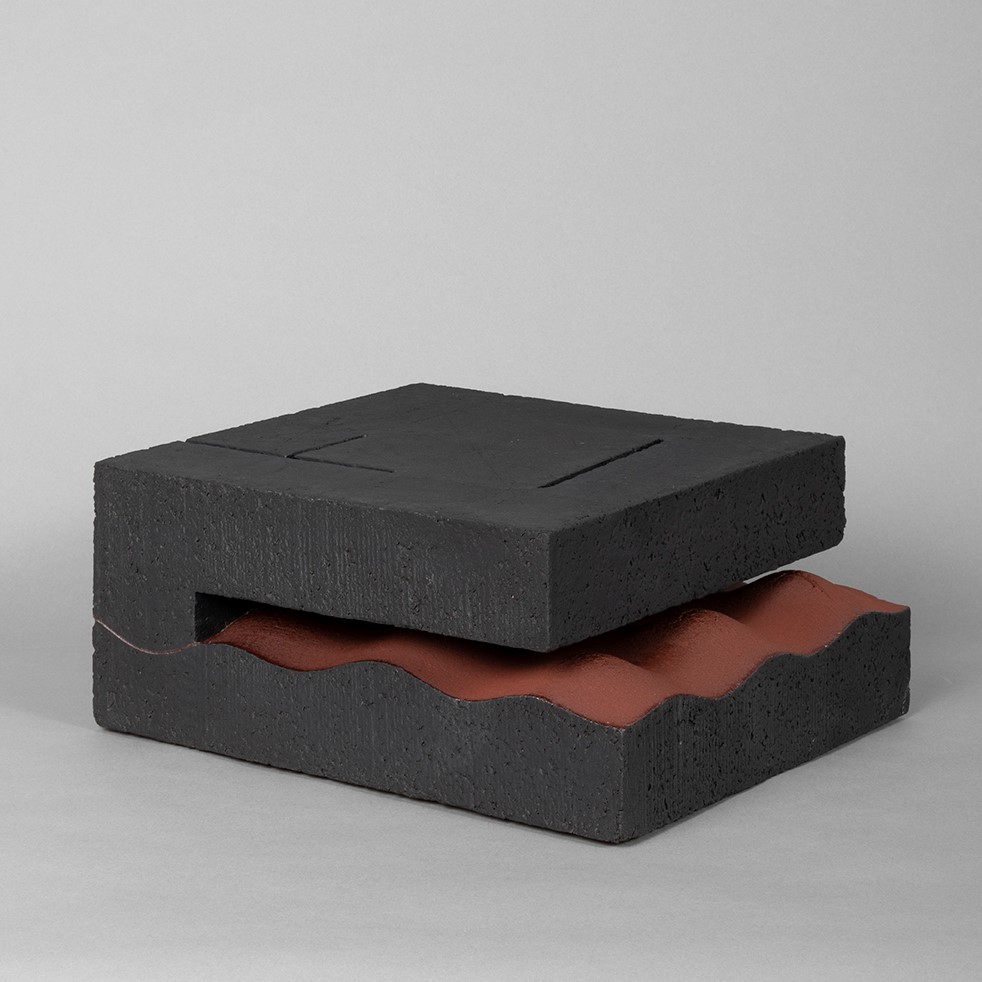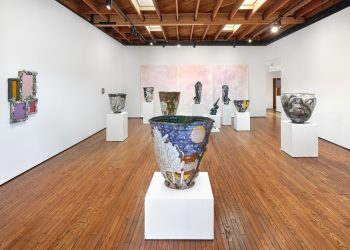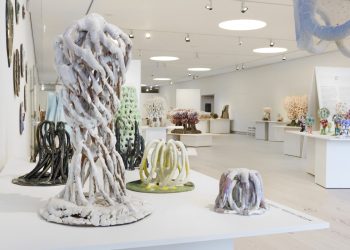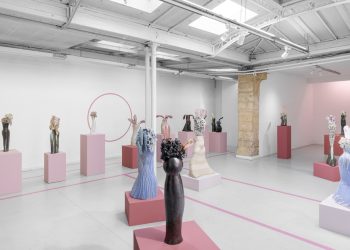CRMCS#2: a selection of contemporary sculptural ceramics is on view at Zwart Huis, Brussels
September 3 – October 24, 2020
After the successful CRMCS#1 edition, gallerist Elke Helbig and curator Kris Campo continue their tribute to the expressive power of the medium clay. At the same time, they choose a totally different angle.
This time around they bring together work by five visual artists from Belgium and abroad: Jean-Claude Legrand, Lut Aerts, Monika Debus, Johan Tahon and Tine Deweerdt.
What they have in common is the subtlety of their work, which conveys a certain sacredness. The design is diverse, from organic over figurative to abstract. Each time with a strong graphic touch. In contrast to CRMCS#1 with its wild explosion of colours, the palette now remains very sober, with shades between white and black.
The small gallery space of Zwart Huis in the Rivoli building was one of the bigger challenges for this exhibition. But once again Kris Campo transforms the individual works into an overall picture, which almost stands alone.
The gallery, with its large glass walls, becomes a transparent viewing space, a ‘kunstkammer’ for three-dimensional works. You don’t have to enter the gallery to experience the work.
But if you do go inside, you imagine yourself in an intimate sculpture garden, where you can carefully stroll between the works. You will be absorbed in a serene atmosphere of objects and forms which seem to invite reflection and contemplation, but above all encourage enjoyment.
Kris Campo (1961) studied ceramics in Antwerp and Ghent. Since 1987 she has been developing her own visual oeuvre and took part in exhibitions and competitions in Belgium and abroad. She worked for fifteen years as a guide in the Royal Museum of Fine Arts in Antwerp and has been a ceramics teacher at the Academy of Sint-Niklaas since 1997. She is also active as an artistic coach for professional and semi-professional artists.
Johan Tahon
For Johan Tahon, sculpture is like breathing.
From a young age, he had already discovered that objects lent a lightness to the darkness of existence. Pain was his driving force, and yet each of the sculptures created by his hands afforded him a glimpse of the beauty of rebirth. Restless and filled with longing for the inexpressible, Johan Tahon explores the boundaries of the great unknown. Trusting in his material, technique and skill, he goes in search of the nothing that is at once everything in a manner that is as fearless as it is stubborn. Of a present that is also past and future. And of the silence that speaks volumes.
Over the past few decades, Tahon has breathed life into an impressive sequence of mysterious bronze, plaster and ceramic sculptures: injured giants and unapproachable angels, tormented creatures and modest monks, sensual nudes and amorphous hybrids.
All of these float between the earth and the heavens.
Lut Aerts
The sculptures of Lut Aerts appear as fragments of an unreal landscape: encrypting the tree, the island, bridges and water. These images arise out of direct sensory experience of nature and landscapes. In a free and expressive style she creates metaphorical and poetic forms which instill personal meaning on life.
Her artistic quality is expressed explicitly through the sculptural language of her objects and her delicate way to apply the technique in function of the transmitting message. The title evokes and is a starting point for the free, dwelling imagination of the spectator. The subject itself needs a slow exploration to find the right way of expression. They only can be made by a mature hand because, on the opposite, the technique of direct modelling needs a fast execution to let the work and the surface breath lively.
Text by Tania De Bruycker
Tine Deweerdt
Tine Deweerdt makes pots, bowls and scales. The material is used in full and accentuated; its raw shape refers to the earth, to clay from Flemisch polders. She combines this with the use of coloured clays and porcelain. The result is timeless and can refer both to the past and to nature. The basic shape has remained the same, although the effect has become more fanciful, without losing its poetry. One could get hurt by it, although the object is equally fragile.
Monika Debus
My work moves silently between abstraction and representation while balancing on the cusp of painting.
Their primary strength lies in a basic universal vocabulary. Combinations of simple forms, spontaneously painted with elementary signs evoke a multitude of associations as individual entities.
A special saltglaze finish gives the surface of the works a subtle depth which enhances their originality as well as their mystical aura. The pieces unveil a private cosmos to the viewer while remaining reminders of instinctive bodily movements.
Jean-Claude Legrand
The square is the departure point and the main characteristic of my work, which is being influenced by nature and the architecture we are surrounded by.
The compass and the rule are the only self-imposed instruments. They help me to transfer paper drawings onto the clay plates.
Cutting and assembling plates gives birth to architected volumes, inside which spaces are created and invite you to enter through thought. Unlikely and protecting architectures, rhythmed by narrow slits, offer an opening towards the outside.
I refer to nature through folds that remind of the crustal movement, through rock imprints, the imperfection of the surface and the texture of clay.
The square is entirely entangled in my approach. It is a tool of work and it lays down its own rules, leaving me with the choice of accepting or refusing these.
Catalog text by Koen Van den Broeck, published in conjunction with the exhibition. Published here with the permission of the editor – Zwart Huis, Brussels. Translation by Peter Boelaert and Leo Vande Velde.
Galerie Zwart Huis began its activities at the “De Beir” house at 8, Avenue Dumortierlaan, in Knokke, Belgium. The renowned architect Huib Hoste built this modernist house in 1924. There were acclaimed exhibitions of Belgian artists as Jan Fabre, Luc Deleu, Jan Vanriey, Liliane Vertessen and Johan Tahon. In 2007 the gallery moved to a new location at the sea front and continued to exhibit contemporary Belgian art. In 2015 founder Gerda Vander Kerken was succeeded by her daughter Elke Helbig. In 2016 Zwart Huis opens a new space at the Rivoli Building in Brussels.
Contact
+32 479 45 25 71
info@galeriezwarthuis.be
Address
Zwart Huis
Rivoli Building #20
Waterloosesteenweg 690
1180 Brussels


